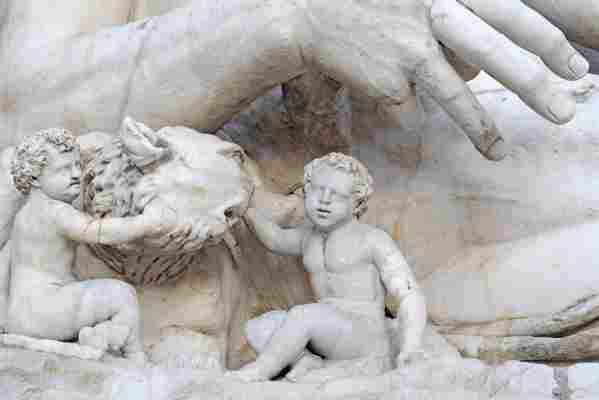1. Activate students’ prior knowledge about mythology and introduce the activity.

Distribute copies of the KWL chart to each student and ask them to complete column 1 by writing a definition of the term myth in their own words, as well as the names of any myths or characters from myths they may know, or ideas about why myths may have been created. After students are done writing, invite volunteers to share their answers. Then explain to the class that a myth is "a story that was told in an ancient culture to explain a practice, belief, or natural occurrence." Tell students that, in this activity, they will explore connections between mythology and culture.
2. Have a whole-class discussion about what students want to know about mythology and culture. Encourage students to share their questions and capture them in writing on the board. Prompt students to think about questions that would be interesting to research, such as:
What types of myths are there?
What purpose did myths serve at the time of their creation?
How do myths differ in different cultures?
Have each student select one of the questions to research and write it in column 2 of the KWL chart.
3. Have students work independently to research their question.
Have partners use library or Internet sources to research their question and write their findings in column 3 of the KWL chart. Invite representatives from each pair to share their findings with the whole class.
4. Introduce three types of myths that were popular during ancient Roman times.
Explain to students that, during the time of ancient Rome, three types of myths were prevalent:
Foundation, or founding, myths that explain the founding of a city such as Rome
Political myths that reinforced the government as being connected to divine law
Moral myths that dealt with individuals’ morality or lack of morality
Ask: What connections can you make between your research findings and these types of myths specific to ancient Roman culture?
5. Have students explore the purpose that different myths served in illuminating ancient Rome.
Remind students of the definition of myth that you discussed in Step 1. Write the following prompt on the board: What purpose do you think each of the three types of myths (foundation, political, and moral) served in ancient Rome? Divide students into pairs. Have them use the think-pair-share strategy to consider how different myths served to illuminate ancient Rome. First, have students think about the question independently and jot their notes on the back of the KWL chart.
6. Introduce the reading.
Next, have students discuss their ideas with their partner. Distribute a copy of the Ancient Roman Myths handout to each pair. Ask them to work together to read the summaries and confirm or revise their ideas about what purpose each of these types of myths served in ancient Rome. Explain to students that another definition of mythology is that it is a story of where we came from and who we are. Ask: What do you think these myths say about who the ancient Romans thought they were and where they came from?
7. Have pairs share their ideas with the whole class and add to their KWL charts.
Regroup as a class and invite each pair to share their answers to the prompt. Elicit from students that myths reinforced Roman people’s ideas of themselves, their origins, and their values. Have them add what they learned about ancient Roman myths to column 3 of their KWL charts or to the back of the charts.
